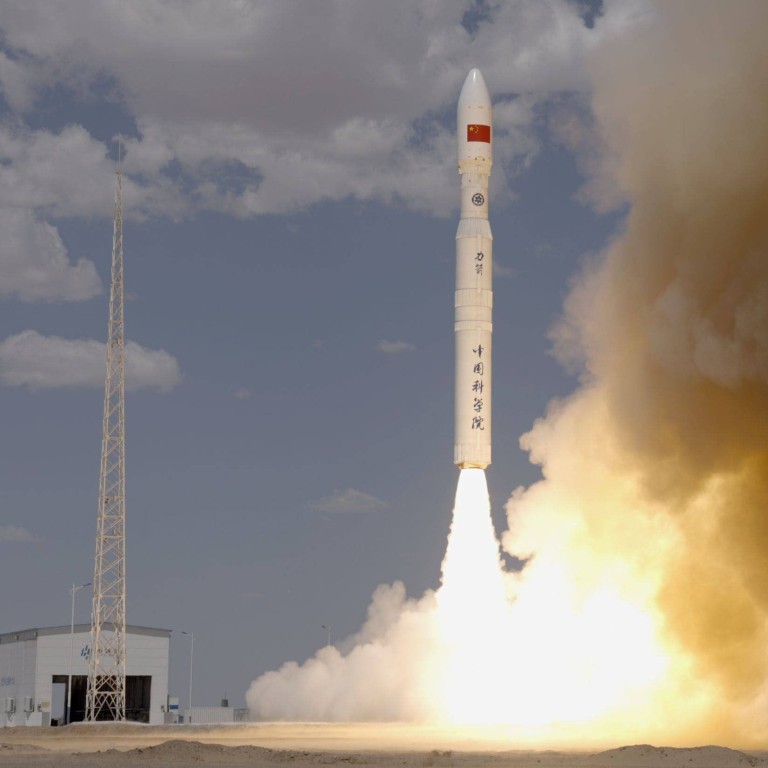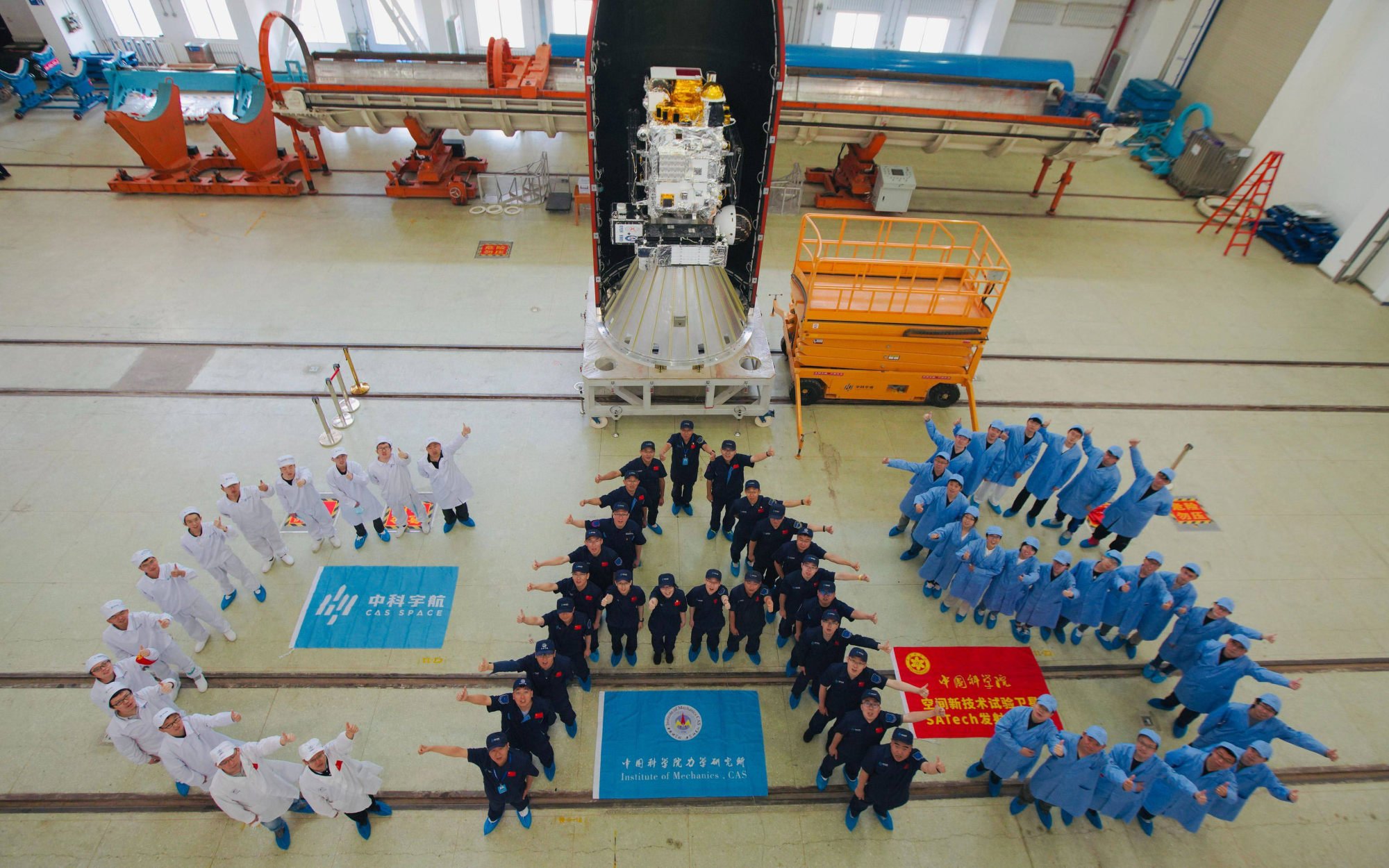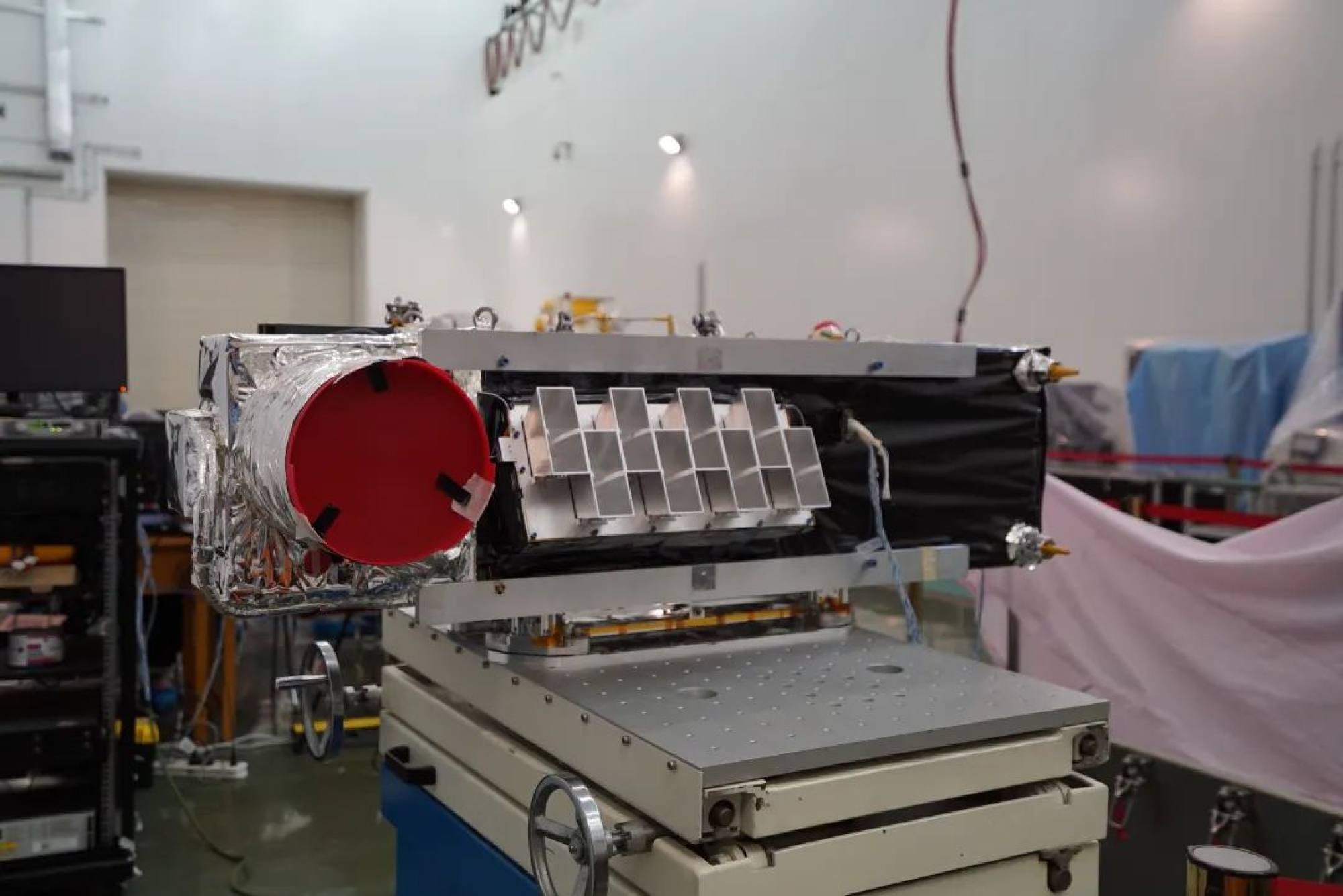
China launches new satellite in ‘important step’ towards global quantum communications network
- Jinan 1 will conduct key distribution experiments in lower-Earth orbit after a month of testing
- More launches planned for near future to support quantum communication for over 100 users
China launched a new quantum satellite on Wednesday that could be a first step towards establishing an ultra-secure communications network with global coverage.
It was one of six satellites launched around noon by the Lijian quick response rocket from the Jiuquan Satellite Launch Centre in the Gobi Desert, according to Xinhua.
The quantum satellite, developed by the Chinese Academy of Sciences, would conduct quantum key distribution experiments in lower-Earth orbit, the report said.
A quantum key network uses entangled particles to encrypt a message. Any attempt to steal or decode will alter the message physically and alert the receiver, thanks to the law of quantum physics.
It is the second quantum satellite launched by China after it sent the world’s first such satellite, Mozi, into orbit in August 2016.

Called Jinan 1, it weighs less than 100kg – about a sixth of the weight of Mozi – but can generate quantum keys at speeds two or three magnitude higher, the project team said in a statement posted on WeChat.
It said Jinan 1 would enter service after a month of testing and it was “just the first step”. More such satellites would be launched in the near future to support quantum communication for more than 100 users around the globe.
“It is also an important step. It makes China the first country in the world to achieve real-time, satellite-to-ground quantum key distribution with micro-nano satellite and miniaturised ground stations,” the statement said.
China’s first quantum satellite, Mozi, is equipped with what was the most sensitive device when it went into orbit six years ago – it can produce and detect a single photon, or an extremely weak particle of light. The satellite has conducted record-breaking experiments in quantum physics, including proving the feasibility of quantum communication from one continent to another.
China’s power grid is world’s biggest – and now protected by quantum satellite
But researchers involved in the project say Mozi has its limits. The first generation of space-based quantum communication devices, for instance, can only establish a stable link with the ground at night because the sun produces so much noise that the light signals are drowned out. Also, the bandwidth for quantum key distribution – which is as small as dial-up – restricts communication to voice or low-resolution videos.
In recent years, the team – led by Pan Jianwei, a professor and executive vice-president of the University of Science and Technology of China in Hefei – has been working to find solutions to these problems. That includes developing new technologies to maintain quantum communication during the daytime and in bad weather, according to research papers published by the team.
Zhao Yongli, a professor at the Beijing University of Posts and Telecommunications who is not part of the Mozi team, wrote in a 2020 research paper that technological developments had prompted China to build a quantum satellite constellation to take high-speed, stable quantum communication around the globe
While traditional communication satellites mainly serve as a relay, the most important job of a quantum satellite is to generate entangled particles to be used as quantum keys. Those quantum keys could become a valuable resource for global communication in the future, according to Zhao, who works in the State Key Laboratory of Information Photonics and Optical Communications at the university.
He said the more quantum satellites in orbit, the more keys could be generated and sent to a “pool” for users with high security demands.
“The idea is to continuously generate quantum keys between each pair of connected nodes, and then store the keys in a quantum key pool” managed by a central agency in China, Zhao said in the paper published in Chinese peer-reviewed journal Radio Communications Technology.
Quantum secure communication breakthrough for China scientists
“Low-Earth orbit (LEO) satellites have the advantages of small channel loss and low transmission delay. It is a more feasible way to use the networking of LEO satellites to build a quantum satellite constellation,” he said.
Zhao said China also planned to have quantum satellites in high-Earth orbit (GEO or geosynchronous orbit) where they could remain relatively stationary with the ground. He estimated that three such satellites could cover the entire planet.
There would be significant transmission loss, but Zhao said GEO satellites could “generate keys continuously at a lower rate” and send them to the pool.
He said the Mozi team had been working on technologies to improve the efficiency of satellite links – including developing larger receiving mirrors and more accurate targeting systems – aiming to increase the rate of key generation.

China has also been testing cutting-edge quantum telecoms technology on Shijian 20, its most advanced communication satellite, according to Sun Xiaojie, a senior engineer with the Quantum Engineering Research Centre at the China Aerospace Science and Technology Corporation in Beijing.
A record-breaking experiment began in May 2020, conducted from an altitude of 36,000km – or 60 times higher than Mozi’s orbit, Sun wrote in a paper in the Chinese Journal of Astronautics in July last year.
Sun said in the paper that the experiment resumed in November but did not mention the encounter with the US satellite. She said the research suggested that the error rate of light signals from a geostationary satellite was between 2 and 8 per cent, which was “good enough for quantum key distribution”.

